This year was our first year of serious human anatomy study using an eclectic and project based approach. Human anatomy models made the pages of our text come alive for the visual spatial learners in our home.
With the models we could touch, see, and imagine how each part fits together after taking the models apart and then putting them back together again. The models sat on the desk near the computer so they were accessible during breaks in other work. The skeleton was always there, smiling at us as we typed on the computer keyboard. Note: The Big Tim skeleton does not come apart but hangs on a stand that is provided.
Smiling Big Tim (our skeleton model) has been a part of our homeschool family this year. He hangs out by our desktop computer. I was impressed with the quality of the model, expecting a toy and getting a real lab tool.
- This skeletal model comes pre-assembled and marked with a detailed numbering system. The accompanying guide (half in Chinese and sometimes Latin) tells you bone and muscle names. We gave up on the guide and used our text as a reference instead. The numbers are very small and in an odd script that is hard to read (example – sometimes a g and a 9 look the same).
- The model comes with a stand.
- Far more detailed than we needed for high school human anatomy study
- Large size – 25 inches tall
- Purchased from Amazon.com. (An investment at around $45)
- Fun to work with…makes us smile.
Ein-O Science Models
We purchased the Brain/Skull and Torso models from Rainbow Resource. At $9.95 a piece they are a reasonably priced way to get human anatomy models with some detail. We used the models as a reference when learning about the various body systems.
- The parts are removable, made of a hard rubbery plastic and are colored to show details. Some of the parts you can take apart and see the cross-section. Even though they are small in size, they give a good visual of how the various body parts fit together.
- The model comes pre-assembled and with a simple guide detailing a few points about each body part in the model. (No instructions on how to assemble the model once you take it apart.)
- The only complaint that I have about these models is that they don’t go back together easily. The head is very difficult to get back onto the torso. We have not lost any of the pieces to either model because once you get them together, they stay nicely.
- Each model has its own stand and storage box if you need to keep them on a shelf.
- We are planning on purchasing the heart and the eye for this up-coming school year. Edit 8/3/12: We received the heart and eye models. I am very disappointed in the heart. There are four pieces made of hard plastic and nothing like the brain model in it’s detail. The eye is slightly more satisfactory as far as detail and being a real manipulative but the hard plastic is what is so different from the brain and torso.
I love that they became part of our casual everyday learning. Keeping them near the computer, right in plain sight, was an effective way to make sure that they were viewed and worked with on a regular basis. This is the kind of learning that sticks in the brain long after the official course is over.
Thumbs up for both products from the Harmony Art Mom family!
Written by Barb-Harmony Art Mom. I blog at Harmony Art Mom and am the creator of Harmony Fine Arts. I would love for you to join us for the Outdoor Hour Challenges at the Handbook of Nature Study.
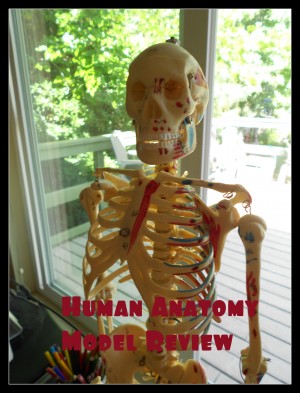
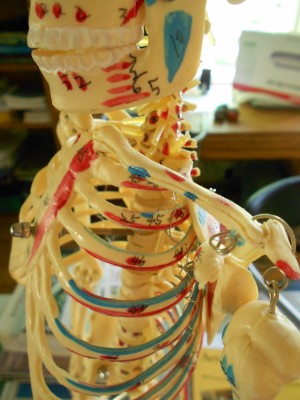
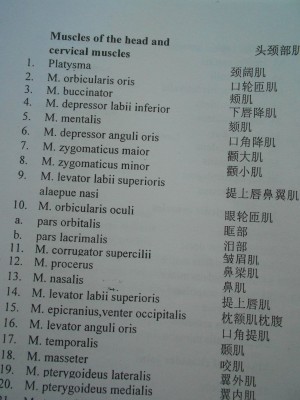
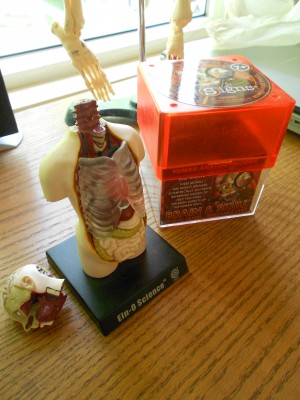
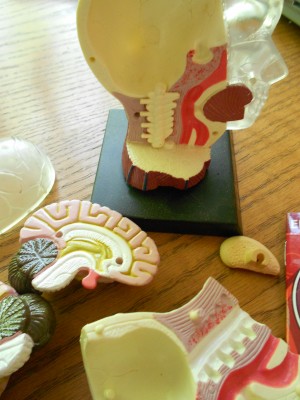

What a timely post! We’re learning all about the human body this coming school year! I’ll have to look through our books and figure out which models to purchase. I appreciate your honesty, especially that the pieces don’t go back together well once taken apart. Good to know! I’m a visual learner, so the smaller size is great. We can keep them out all year long. I can’t wait to learn alongside the kids!
Is that my imagination or is there Chinese on that guide? Wow!